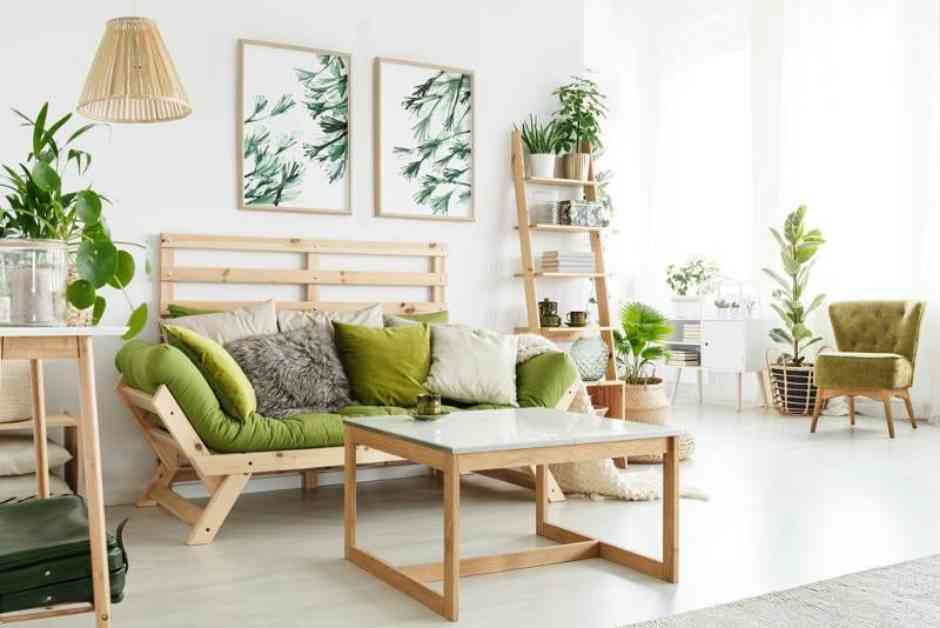The global furniture market is experiencing a significant shift as environmentally conscious consumers prioritize sustainability in their purchasing decisions. This has led to the emergence of the eco-friendly furniture market, which is quickly becoming a prominent segment within the home décor industry. In this article, we will explore the current trends, challenges, and future prospects of the eco-friendly furniture market, emphasizing its growing importance in today’s environmentally aware society.
### Growing Consumer Awareness
Consumers today are more informed than ever about the environmental impact of their choices, including the products they bring into their homes. This heightened awareness is driving the demand for furniture made from sustainable materials such as reclaimed wood, bamboo, and recycled metal. In addition, consumers are increasingly seeking products that are free from harmful chemicals and toxins, such as formaldehyde and volatile organic compounds (VOCs).
### Sustainable Sourcing and Manufacturing
Manufacturers are responding to consumer demand by adopting sustainable practices throughout the production process. This includes responsibly sourcing raw materials from managed forests, using recycled or upcycled materials, and minimizing waste during manufacturing. Energy-efficient production methods and the use of eco-friendly finishes and adhesives are becoming standard practices among leading eco-friendly furniture brands.
### Minimalist and Timeless Design
The trend towards minimalism and timeless design is in alignment with sustainability principles. Consumers are opting for furniture that is durable, versatile, and designed to last, rather than following short-lived trends. This emphasis on quality over quantity is reducing the environmental impact of furniture production and disposal, promoting a more sustainable approach to home décor.
### Circular Economy and Upcycling
The concept of the circular economy, where products are designed to be reused, repaired, or recycled, is gaining momentum in the furniture industry. Upcycling, which involves transforming old or discarded materials into new products, is also becoming a popular trend. This approach not only reduces waste but also adds a unique, personalized touch to home decor.
### Challenges in the Eco-Friendly Furniture Market
**Higher Costs:**
One of the primary challenges facing the eco-friendly furniture market is the higher cost of sustainable products. Premium, responsibly sourced materials and sustainable manufacturing practices often result in higher prices compared to conventional furniture. While many consumers are willing to pay a premium for eco-friendly products, the higher cost can be a barrier for some, especially in price-sensitive markets.
**Lack of Standardization:**
The lack of standardized certifications and labels for eco-friendly furniture can make it difficult for consumers to verify the sustainability claims of manufacturers. Certifications like FSC (Forest Stewardship Council) and GREENGUARD exist but are not universally recognized or applied. This lack of standardization can lead to confusion and skepticism among consumers, potentially hindering market growth.
**Limited Availability and Variety:**
Despite the growth of the eco-friendly furniture market, it remains relatively niche compared to the broader furniture industry. Consumers may encounter limited options in terms of availability, variety, and style. This can be particularly challenging for those looking to furnish entire homes or offices with sustainable products. Expanding the range of eco-friendly furniture options will be crucial to meeting diverse consumer needs.
### Future Prospects
**Technological Innovation:**
Advancements in technology are expected to play a vital role in the future growth of the eco-friendly furniture market. Innovations in materials science, such as bio-based composites and sustainable alternatives to traditional materials, will enable the creation of more eco-friendly furniture options. Manufacturing processes like 3D printing and digital fabrication have the potential to reduce waste and increase the efficiency of sustainable furniture production.
**Government Regulations and Incentives:**
Government policies and regulations aimed at promoting sustainability and reducing environmental impact are likely to drive further growth in the eco-friendly furniture market. Incentives such as tax breaks, subsidies, and grants for manufacturers adopting sustainable practices could encourage more companies to enter the market. Stricter regulations on harmful chemicals and unsustainable materials may push the industry towards more eco-friendly alternatives.
**Mainstream Adoption:**
As consumer demand for sustainable products continues to rise, eco-friendly furniture is expected to transition from a niche market to a mainstream one. Major furniture retailers are increasingly incorporating eco-friendly options into their product lines, making sustainable furniture more accessible to a broader audience. This trend is likely to accelerate as sustainability becomes a key consideration for consumers across all demographics.
**Sustainability as a Brand Differentiator:**
In a competitive furniture market, sustainability is becoming a crucial differentiator for brands. Companies that can effectively communicate their commitment to eco-friendly practices and offer high-quality, stylish, and sustainable furniture are likely to gain a competitive edge. Marketing strategies emphasizing transparency, ethical sourcing, and the environmental benefits of eco-friendly furniture will resonate with discerning consumers.
### Conclusion
The eco-friendly furniture market is on track for significant growth as sustainability takes center stage for consumers and manufacturers. While challenges like higher costs and lack of standardization persist, the market’s future looks promising, driven by technological innovation, government support, and mainstream adoption of sustainable practices. As the furniture industry evolves, eco-friendly options will play a vital role in shaping the future of home decor, providing consumers with stylish, high-quality products that align with their environmental values.






















